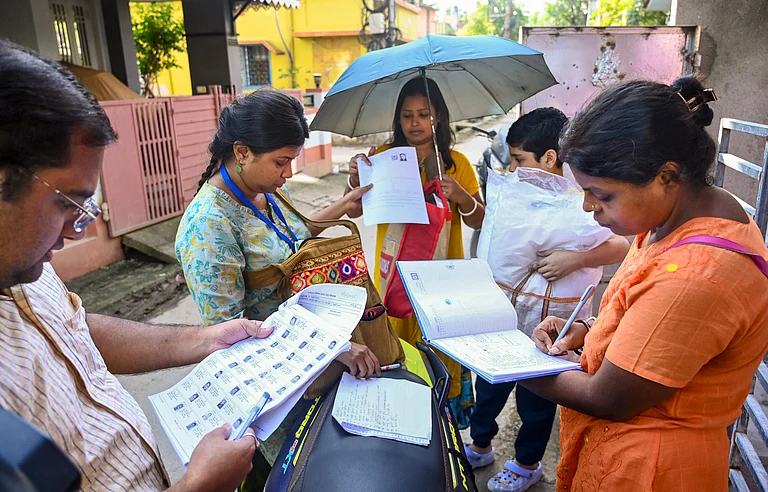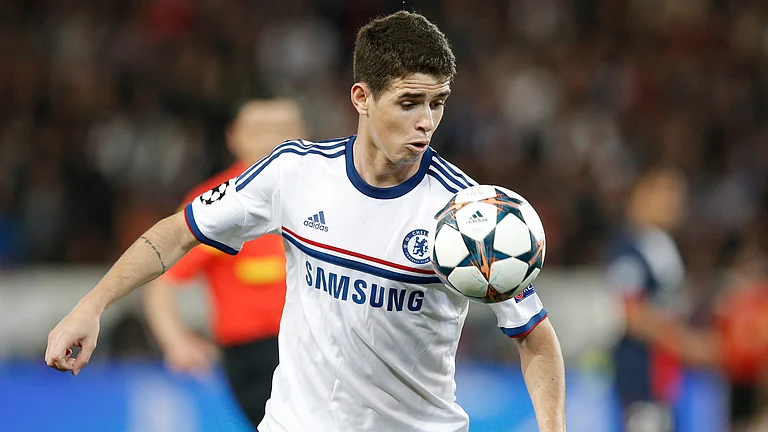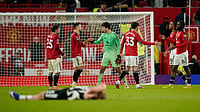The Kansas City Chiefs’ Super Bowl victory has capped yet another mammoth NFL season. But just about a month ago, gloom had descended on American Football. On January 3, Buffalo Bills defensive back Damar Hamlin suffered a cardiac arrest on the field during an encounter against Cincinnati Bengals. (More Sports News)
Thanks to timely medical treatment, Hamlin survived and is doing well. He even attended the Super Bowl game, wearing snazzy white glasses.
But among the vast number of professional and recreational athletes, including the growing tribe of gymmers and long-distance runners in India, a question remains. How does a 24-year-old man in peak physical condition suffer a heart attack? And if that can happen to someone in their prime, what does it mean for the 40-plus age group, who are thronging gyms and running clubs around India?
‘Outlook’ spoke with Dr. Snehal Kothari, a senior Interventional Cardiologist at Mumbai's Lilavati Hospital, on email about cardiac arrests in sports, their causes and precautions a person can take.
1. Despite a proper diet and workout regimen, despite being young, why do some elite players get cardiac arrests e.g., Damar Hamlin in NFL and Christian Eriksen in football?
Cardiac arrest during athletic activity in young, fit athletes is often due to an abnormal heart rhythm such as ventricular fibrillation, which is a very fast, irregular heartbeat that leads to the pumping chambers of the heart to quiver ineffectively rather than pumping blood. This usually occurs in athletes who have an underlying (generally undetected) predisposing heart condition. These conditions may be structural, congenital (present at birth) or inherited. Rarely, a blunt injury to the chest during play can trigger ventricular fibrillation.
2. How can players protect themselves against these?
Players should undergo a medical evaluation before they take up athletic activity. This should include a comprehensive history, thorough physical examination. an ECG and an echocardiogram. In selected cases other special tests may be needed. Clearance from an expert doctor should be obtained and medical advice followed. Evaluations should be repeated at periodic intervals as determined appropriate by the doctor. Any player who experiences symptoms like chest pain, shortness of breath, palpitations or fainting should promptly get evaluated before continuing to play. Use of protective equipment like chest guards may be protective in certain sports.
3. In the past, we hardly heard of cardiac arrests among young athletes. Would you agree they have gone up in number? If yes, why so?
The incidence of cardiac arrests among young athletes is low, at between one in 50,000 to 100,000 per year. However, because it is unexpected, dramatic and often in the public glare, it attracts a lot of attention and media coverage.
4. Players like Eriksen made a comeback to the top level despite a huge scare. What are some of the advances in medicine/ rehab that make this possible?
While I cannot comment on a specific case, advances in medical imaging, genetics and electrophysiologic testing allow accurate diagnosis of predisposing heart conditions. And advances in treatment such as cardiac surgery, radiofrequency catheter ablation, pacemakers and implantable cardioverter defibrillators (ICD) allow effective treatment. Return to top level sports may be possible in select cases depending on the nature of the heart condition, the success of treatment and an informed discussion about the risks with the player.
5. In India the number of cardiac arrests in the 40-something age group, many of whom run or go to the gym, seem to have gone up. Why is this so and what would your advice be to runners and fitness enthusiasts?
In India, there has been an increasing trend, in urban areas in particular, of non-athletes taking up running or gymming in middle-age. Some of them may already have risk factors for heart disease. Many of these enthusiasts train intermittently and often without professional supervision. Intense exercise or sudden bursts of exercise increase the risks of heart attacks and sudden deaths during and soon after the exercise. In general, people should start getting used to exercise early in life. For those over 35, or with symptoms or risk factors like a family history, high blood pressure, I recommend a formal medical evaluation and go-ahead from a physician. When commencing exercise, starting low and going slow with professional supervision is safer. I would also advise these enthusiasts to bear in mind that most of the cardiovascular benefits of exercise accrue with moderate exercise (in intensity, frequency and duration) after which there are diminishing returns and even possible harm with heavy exercise. It should also be noted that while exercise can provide health benefits, it does not provide immunity from heart disease or heart attacks.
6. Personally, what are some lifestyle rules you follow for heart health?
One should follow the below to live a healthy life.
• Abstinence from smoking, tobacco and alcohol.
• Limit intake of salt, sugar, saturated fat, processed carbohydrates.
• Eat plenty of fruits, vegetable, whole grains.
• Maintain ideal body weight and avoid putting on belly fat.
• Brisk walking for 30 minutes daily.
• Reduce and manage stress.
• Good quality sleep 7 to 8 hours daily.
• Get regular health checks.



























